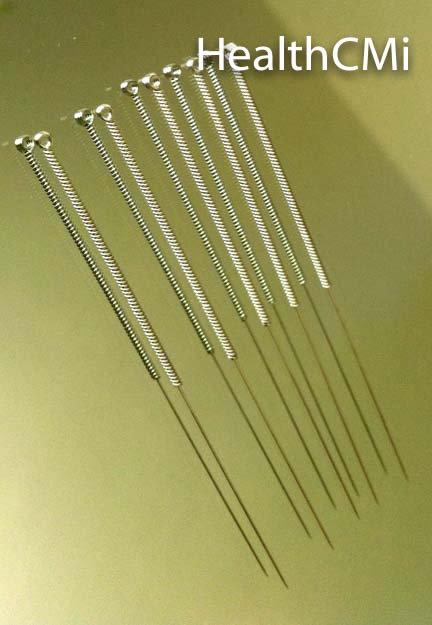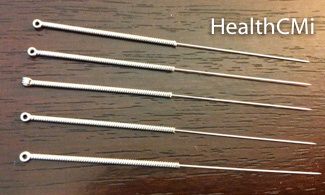Acupuncture combined with oral curcumin intake protects the liver from fibrosis. Curcumin is the chief curcuminoid in turmeric (Jiang Huang, Rhizoma Curcumae Longae). Curcumin is bright yellow, hence the name ginger yellow in Chinese. Jiang is translated as ginger and huang means yellow. Curcumin is a principle polyphenol in Jiang Huang, a member of the ginger family of herbs used for enhancing blood circulation in Traditional Chinese medicine (TCM). The researchers concluded that acupuncture plus curcumin “potently protected the liver” from injury and fibrogenesis. 
The controlled study was performed in a laboratory investigation on laboratory rats. Several study groups were compared: curcumin, true acupuncture, true acupuncture plus curcumin, sham acupuncture. The sham acupuncture group received needling of non-acupuncture points that were located 0.5 cm to the left of each acupoint used in the true acupuncture group. Sham acupuncture did not protect the liver from damage as measured by histological and ultrastructural examinations. The true acupuncture group showed significant hepatoprotective findings; rats in the true acupuncture group had significantly healthier livers.
The researchers discovered a beneficial synergistic effect when curcumin and acupuncture were combined into a treatment protocol. There was an increased protection against liver fibrosis. This is important because liver fibrosis potentially degrades into dangerous complications. Bataller et al. note, “Liver fibrosis is the excessive accumulation of extracellular matrix proteins including collagen that occurs in most types of chronic liver diseases. Advanced liver fibrosis results in cirrhosis, liver failure, and portal hypertension and often requires liver transplantation.”1
Groups that received acupuncture or sham acupuncture were needled three times per week for three weeks followed by two times per week for an additional three weeks. The acupuncture points used in the study were:
- LV3 (Taichong)
- LV14 (Qimen)
- BL18 (Ganshu)
- ST36 (Zusanli)
The acupuncture group showed significant amelioration from liver injury upon examination of hepatocyte arrangement, necrosis, and hepatic pseudo-lobular formation. MMP-9 protein expression levels of hematopoietic stem cells (HSC) were “upregulated remarkably in the acupuncture group” compared with the sham group. MMP-9 (matrix metallopeptidase) is an enzyme that breaks down extracellular matrix and is involved in tissue remodeling. The acupuncture group showed additional significant changes related to the alleviation of liver fibrosis including changes in collagen, fibronectin proteins, TIMP-1 (a tissue inhibitor of metalloproteinases), serum hyaluronic acid and laminin, and several other endogenous secretions. 
Histological and ultrastructural findings for hepatic disturbances and fibrosis were documented. The researchers concluded that, “Acupuncture combined with curcumin potently protected the liver from… injury and fibrogenesis.”2 This was confirmed with laboratory measurements of serum aspartate aminotransferase, alanine aminotransferase, alkaline phosphatase, hyaluronic acid, laminin and procollagen-3. Other findings of alpha smooth muscle actin, extracellular matrix, fibronection, and alpha-1 collagen confirm the hepatoprotective effects of acupuncture combined with curcumin.
The Healthcare Medicine Institute (HealthCMi) is currently completing an acupuncture continuing education course for the prevention and treatment of liver cirrhosis. The course contains Chinese medicine dietetics, acupuncture, herbal medicine, and biomedicine. The course will be made available soon and will be pre-approved for NCCAOM PDAs, acupuncture CEUs, and several other certifications for acupuncturist license renewal.
References:
1. Bataller R, Brenner DA. Liver fibrosis. The Journal of clinical investigation. 2005 Feb 1;115(2):209-18.
2. Acupunct Med doi:10.1136/acupmed-2011-010116. Acupuncture combined with curcumin attenuates carbon tetrachloride-induced hepatic fibrosis in rats. Feng Zhang, Jin Ma, Yin Lu, Guang-Xia Ni, Chun-Yan Ni, Xue-Jiao Zhang, Xiao-Ping Zhang, De-Song Kong, Ai-Yun Wang, Wen-Xing Chen, Shi-Zhong Zheng.


